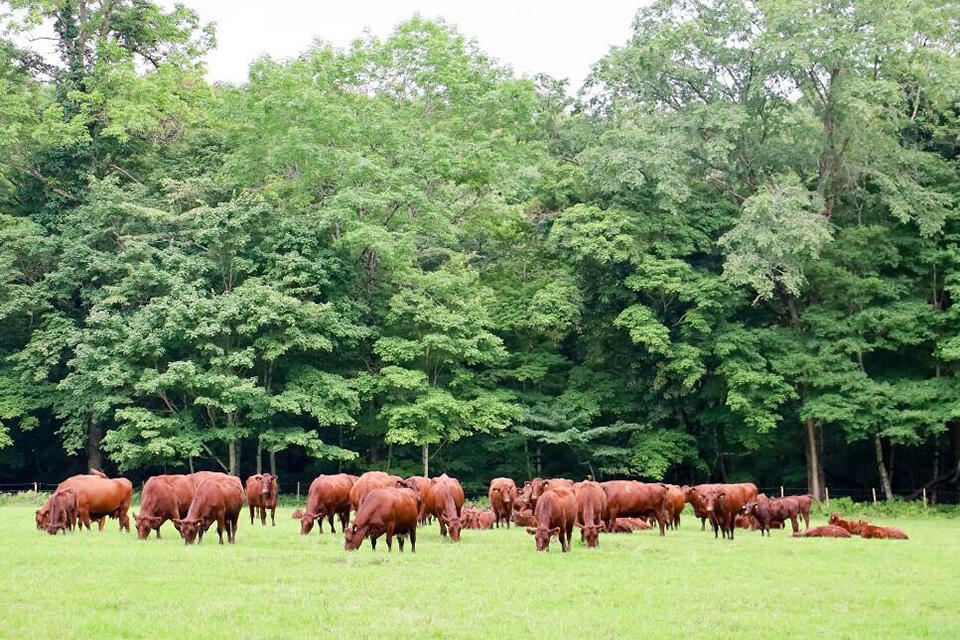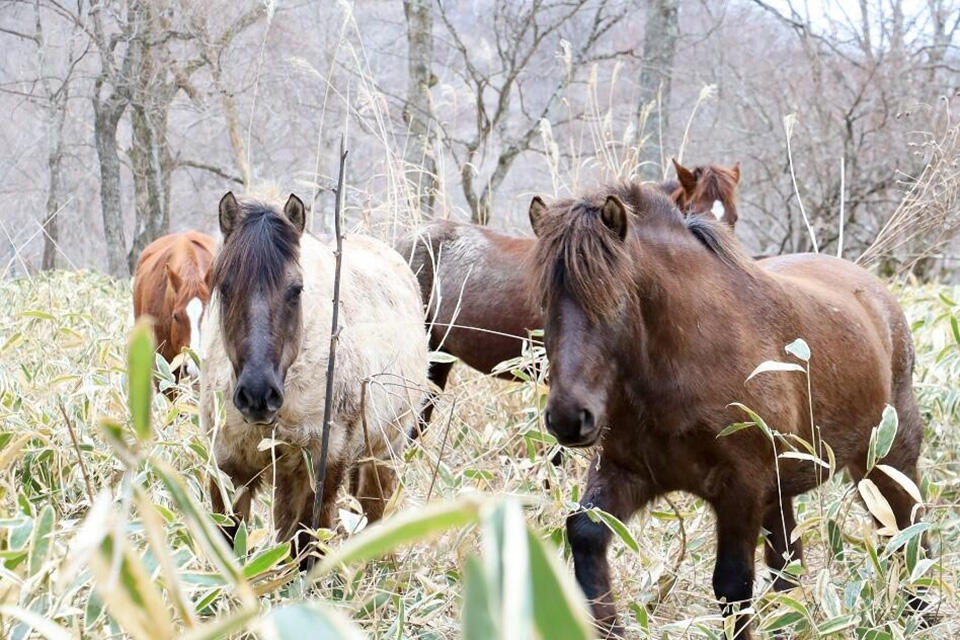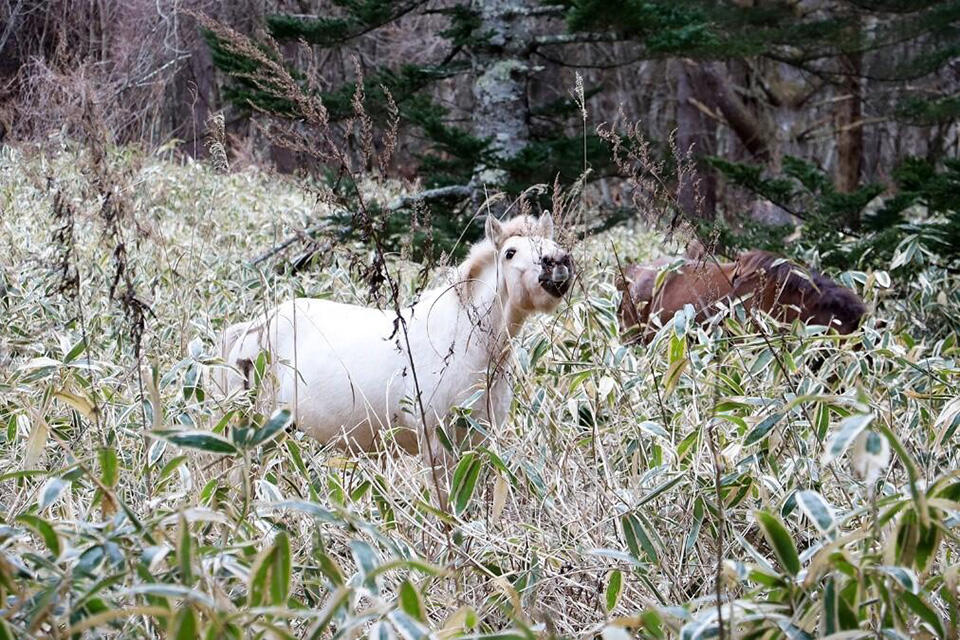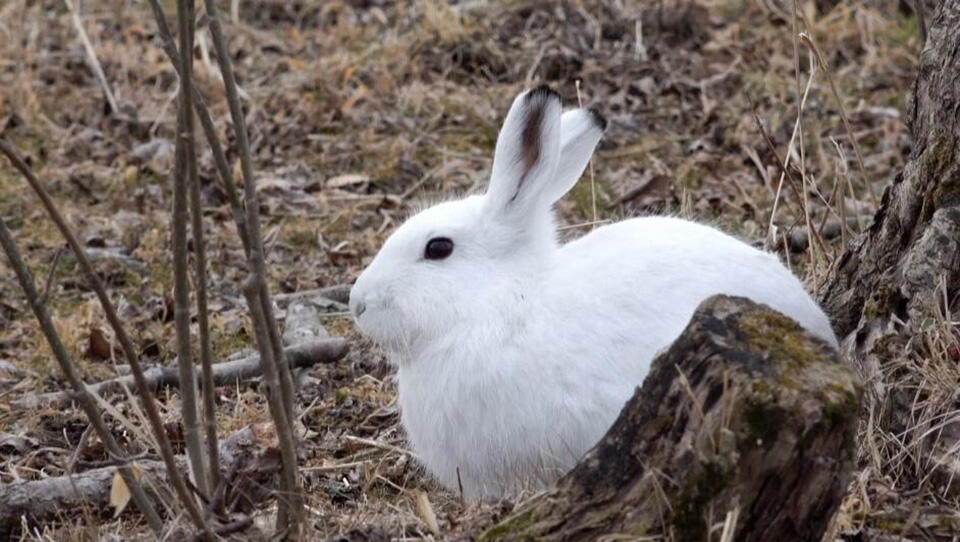Fields of Knowledge: Livestock Research in the Forest
Research Highlight | March 10, 2022
Hokkaido University’s research and academic facilities extend throughout Hokkaido and to Wakayama Prefecture, including experimental farms and ranches, extensive research forests, training ships, and aquatic research stations. With a total area of about 70,000 hectares, the research forests are among the largest in the world. The “Fields of Knowledge” series focuses on the diverse research and academic activities taking place in the fields.
Hokkaido University has research facilities in various locations throughout Hokkaido and mainland Japan. One such facility is the Shizunai Livestock Farm, located in the town of Shinhidaka, about 150 km east of Sapporo. The farm stretches 3.5 km from north to south and 1.5 km from east to west, and is about 70% covered with forest. About 150 cattle and 100 horses are raised in the forest or the pastureland. The Director of the farm, Dr. Masahito Kawai (Associate Professor at the Field Science Center for Northern Biosphere), is researching livestock production that takes advantage of this natural environment.
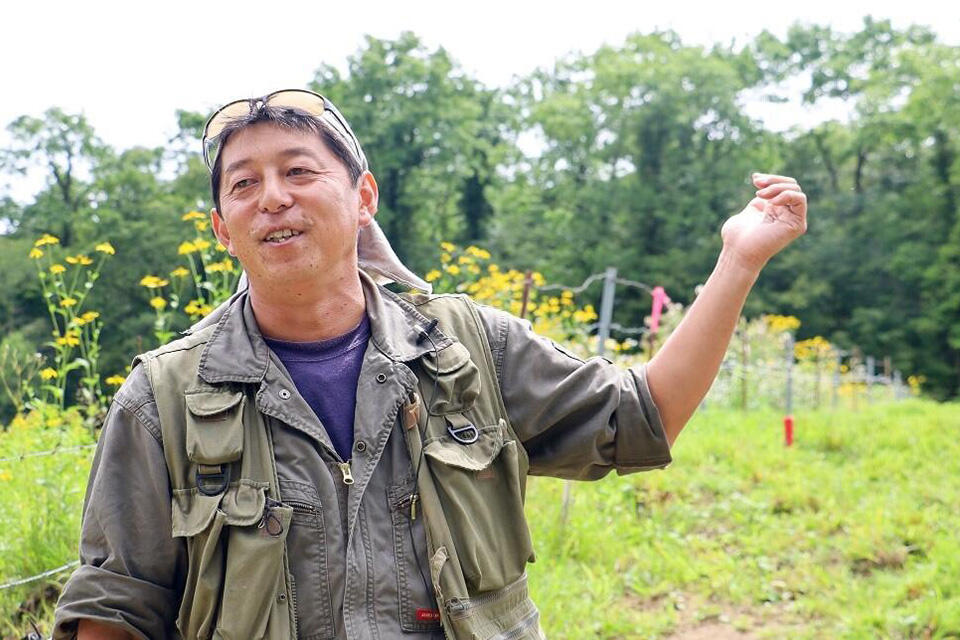
Masahito Kawai, the Director of Shizunai Livestock Farm. He studied animal science at Hokkaido University’s School of Agriculture and obtained his Ph.D. He has been living and conducting research at the farm since he became the Director in 2015.
Raising beef cattle on grass
Kawai is searching for an efficient way to produce beef cattle using grasses and wild plants in the forest. The Japanese beef cattle being raised at the farm, called Japanese Shorthorn cattle, are suitable for grazing. They are raised in Hokkaido and Tohoku region in very small numbers, compared to other Wagyu breeds such as the Japanese Black.
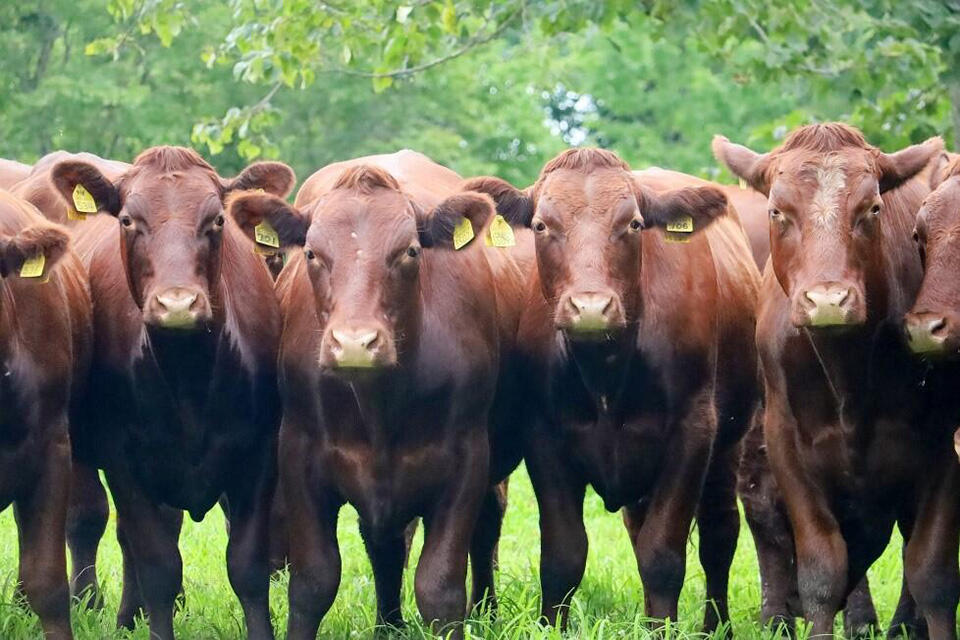
Japanese Shorthorn cattle. In about two and a half years, they grow to about 700 kilograms and be ready for shipment.
In general, for beef cattle production in Japan, five to six tons of corn and soybeans imported from overseas are used per head of cattle. At the Shizunai Livestock Farm, the cattle are released into the pasture from spring to summer to eat grass and wildflowers. They are then fed imported feed only to increase their weight before shipping. As a result, the amount of imported feed required per head is only about 1 ton—about one-fifth of that required for typical beef cattle production. “Of course, the practice of raising high-grade Wagyu with imported feed should be protected too. But I think our production method is the opposite of that. We want to pursue a method that does not rely on imported feed but instead takes advantage of the greatest merit of herbivorous livestock, which is that they can convert plants that people cannot use into meat,” says Kawai.
Raising horses on grass
Kawai also conducts research on the production of horses by “forest grazing,” where livestock are raised in the forest. Most of the horses raised at the Shizunai Livestock Farm are Hokkaido’s “Dosanko” Japanese breed. They spend the spring and fall in the pasture and the winter in the forest. Once the horses are released into the forest, they feed on bamboo grass, which never withers, even in winter. Kawai explains, “From a nutritional point of view, we are studying how much nutrition can be obtained from bamboo. The terrain of the farm is very complicated, with steep slopes and streams, so there are places that are easy for the horses to use and places that are not. We are also conducting research from a behavioral standpoint by following the horses and observing them.”
To raise Dosanko horses through forest grazing, it is also important to keep the bamboo alive. Bamboo photosynthesize in the spring and summer, storing nutrients underground, and grow the following spring using the nutrients they have stored. Kawai and his colleagues have found that if horses are released into the forest for three consecutive summers, almost no bamboo will grow in the grazing area. Therefore, at the Shizunai Livestock Farm, the horses are grazed in the forest during the winter to prevent the bamboo from diminishing.
Kawai added, “By releasing Dosanko horses into the forest, the vegetation gets thinned out, making it easier for people to walk around. We may be able to use horses for forest management instead of using heavy machinery, or we may be able to use the forest as a tourist resource since it is now easier for people to walk around.”
A place to integrate various research
Kawai believes that the Shizunai Livestock Farm is a good place for various types of research in addition to livestock breeding. “I would like to welcome specialists from diverse fields to our farm, where many wild plants and animals live and streams flow. I would like to work together with them to study how to maintain the forest ecosystem while producing livestock.
The video, “Livestock Research in the Forest,” features the Shizunai Livestock Farm, including interviews with Kawai and Associate Professor Ayaka Takimoto who utilize the farm for research.
Shizunai’s Livestock Farm’s website:
https://www.fsc.hokudai.ac.jp/lf/en/
Fields of Knowledge series:
Hokkaido University’s Sapporo Experimental Farm “The Secret of soil’s vitality”
The original article, in Japanese, is available here.
Translated and rearranged by Naoki Namba.

